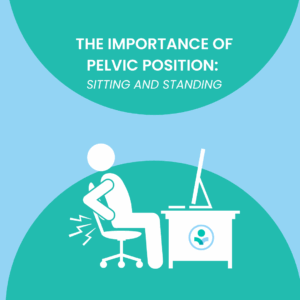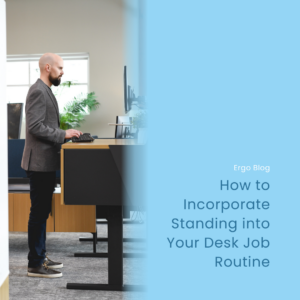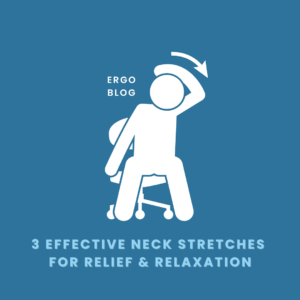Updated: May 4, 2023
Ergonomics for Parents and Caregivers
Ergonomics affects all areas of life. From work to driving, to home, and even taking care of babies and children. Applying ergonomics to the role of parents and caregivers is one that is necessary to maintain overall health and well-being. Caring for babies and children can be incredibly rewarding. In the same sense, it can also be just as physically demanding. Feeling good and being energized helps you be the best you can be. As a parent and caregivers, we are present to help babies and children succeed. We are only able to do that if we take care of ourselves first. Applying ergonomics to your daily routine will greatly reduce the risk of muscle fatigue, an injury, or a musculoskeletal disorder.
Practice safe lifting techniques.
Pause for just a minute and think about how many hours of your day you are lifting or carrying an object. Don’t be surprised if it is quite often. Being in the best position will help to optimize your energy so you can continue to go about your day. When practicing safe lifting techniques. This includes following these steps:
- Start by standing close to the baby or child
- Face the baby or child with your head, eyes, chest hips, and toes
- Place your feet securely and about shoulder-width apart
- Squat to the level of the baby or child
- Place your hands on the baby or child with a good grip
- Prepare for the lift by tightening your core muscles, looking forward, and keeping a straight back
- Lift slowly and hold the baby or child close to your body
- Continue to lift by extending your legs a the same time, keeping your back straight, and breathing out as you lift.
- Feel free to read 3 Steps to Safe Lifting about more safe lifting techniques and stretches.
Along with safe lifting techniques come other functional activities as well. The following tips include the actual tasks that can take place throughout the day which involve lifting or carrying.
Breastfeeding a baby: Use a support pillow to elevate the height of the baby to reduce the amount of sustained lifting. If possible, vary the hold so you are not in the same position each time nursing takes place. Naturally, alternating from the left and right sides will add a different position as well. Different breastfeeding positions include laid-back breastfeeding or reclined position, cradle hold, cross-cradle hold, rugby ball hold, side-lying position, laid-back breastfeeding after a c-section, upright breastfeeding or koala hold, dangle feeding, nursing in a sling, double rugby ball hold and dancer hand nursing position. This article includes descriptions for each of these holds.
Bottle feeding a baby: Alternate between holding the baby with your right and left upper extremities. Also, use a support pillow to place under the arm that is supporting the baby’s head. You can also position the baby in a semi-sitting up position if you are lying or sitting down with your legs propped. Place baby on top of your lap, with their head resting on your knees and their feet on your stomach.
Holding a baby: There are many different ways to hold a baby so you don’t have to continuously be in the same position. This includes a cradle hold, shoulder hold, belly hold, lap hold, face-to-face hold, and football hold. This article explains these holds in more detail. When holding your baby be mindful of your own position. Try to maintain a neutral spine position. If you find yourself looking downward toward your baby for long periods of time, be sure to keep your head up and use your eyes to look downward versus flexing your head forward as this would put more strain on your upper back and neck. If your arms get tired from holding a baby, try baby wearing as well. There are many different wraps and holders available for baby wearing. Be sure to find one that creates a snug fit and keeps your baby or child at your waist level. Alternate between front and back carries as well.
Transferring babies and children to cribs and beds: Practice safe lifting techniques when transferring a baby to a crib. Move as close to the crib as possible to avoid extended reaching. If the baby is not sitting up, you can have the crib set to the highest level to avoid extended reaching down and into the crib. When the child is old enough to transfer from a crib, but not safe to sleep in a bed, you can also consider an enclosed travel crib with a side that zippers open. This is a great solution if you have a history of a back injury and lifting is becoming more difficult. A child will then be able to crawl into bed on their own and the side will zip up to keep them inside.
Carrying a car seat: When carrying an infant car seat, hold the handle close to your waist level with both upper extremities and in front of your body. If you have a diaper bag that needs to be carried as well, considered purchasing one that can be worn as a backpack to free up your arms.
Encourage children to use step stools: Luckily, a lot of kids like to be more independent as they grow up. Using a step stool for kids to access various areas will greatly reduce the number of times that lifting takes place. Be sure to monitor children for safety when stepstools are introduced. If you use steps for kids to access elevated heights, such as changing tables, be sure to have your hands on the child the entire time to be able to support the child if he/she loses their balance. When working in a childcare facility, consider using height-adjustable changing tables so the child can be elevated to the needed height without the use of stairs.
Maintain an Upright Posture and Avoid Extended Reaching
Diaper changing: Position the baby or child close to your waist level and stay close to avoid extended reaching. Avoid repeatedly changing diapers at the floor level as this increases trunk and neck flexion and creates an awkward posture. Also, consider the position that you have in relation to the baby or child. Position yourself or the baby/child so the bottom of the baby/child’s feet is facing your stomach versus standing to the side of the baby. This position allows you to maintain a neutral neck and spine position and eliminates twisting and turning your head to one side.
Buckling into a car seat: If you are buckling your baby into an infant car seat, be sure to squat down, kneel, or half-kneel to the floor level where the baby is. Avoid bending at your waist to reach down to the baby. When buckling your child into the car seat, move your body as close to you can to the car seat. This will avoid extended reaching as well. When tightening the seat belt, keep your arms and elbows close to your body and use the weight of your body to help pull.
Adjusting the stroller handle: Keep the handle of the stroller at your waist level. This is your comfort zone. Having to push and pull outside of this zone becomes more strenuous. Also, be sure to keep your elbows bent to 90-100 degrees when holding onto the stroller handle. This will encourage an upright and neutral posture.
Bathing your baby or child: Use a baby bathtub at your sink or counter to maintain an upright standing position and avoid a forward bend. Keep the bathtub close to you without reaching outward. Once your baby is ready to take a bath in a standard bathtub, use a kneepad, soft mat, or towel to kneel on to protect your knees. Also, move close to the child during this time as well.
Change positions frequently when playing at the floor level: Change your positions when you are on the floor so different muscles are activated throughout your day. Floor-level positions include pretzel sitting, long sitting, kneeling, half kneeling, side-lying, prone, and supine.
To review, the ergonomic considerations to focus on, include safe lifting and keeping a neutral posture without extended reaching. As you focus on caring for a baby or child always practice safe lifting techniques whether you are retrieving a lightweight toy from the floor or lifting a heavy child. As often as possible, keep your neck and spine in a neutral position. Avoid reaching outward and keep your elbows close to your sides. Try incorporating these tips into your day to create new habits.
Check out our YouTube video below for a visual representation of the blog!



